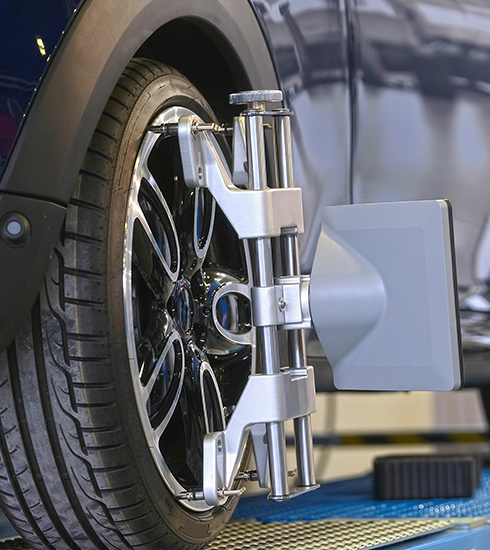Wheel alignment is a maintenance service for the angle and direction of tyres when they make contact with the road, set according to the optimal guidance provided by the vehicle manufacturer. The alignment of your wheels influences vehicle handing and safety, as well as impacting tyre wear.
Wheel alignment and tracking are the same. Tracking is a term used previously when only the two front tyres were tracked rather than all four which is when wheel alignment became the correct term. Technology has advanced along with vehicle technology over the years and alignment is now often carried out using laser and HD imaging sensors which provide an overview of different angles including camber, toe, thrust line and caster. This precise method means garages can easily monitor and adjust the tracking back to manufacturer recommended settings.
Having your wheels aligned at regular intervals provides the benefit of:

To understand if your vehicle requires wheel alignment there are characteristics you may spot when driving whilst other traits may only be discoverable by a technician:
It is recommended to have your wheels aligned at every year or other year dependent on how many miles you cover. City driving is more likely to require more frequent alignment compared to those who do more motorway driving where road conditions generally tend to be better maintained. Between these intervals, wheel alignment can be negative affected by hitting a kerb or pothole meaning your car may require alignment sooner.
Having your wheels aligned after replacing your tyres will allow for optimal tyre life and effectiveness by ensuring they contact the road at the vehicle manufacturer recommended angle.
Both wheel alignment and tyre balancing are crucial in maximising the lifespan and performance of your tyres. Wheel alignment is focused around the direction the tyres face and the angle they make contact with the road surface, whereas tyre balancing ensures the wheel rim, tyre and valve spin without vibrating.
To learn more about our best tips for tyre care to maintain performance and extend tyre life, read our guide to tyres.